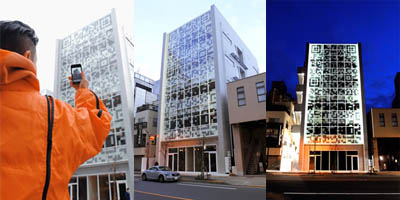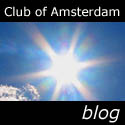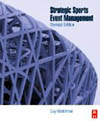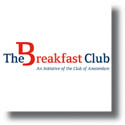
| Welcome to the Club of Amsterdam Journal. Issues addressed during our next event about the future of Sports: In many regards The Netherlands can be considered a country of sport, not only on account of its large sporting population but also because of a fair number of companies in the sports and leisure industry. Still, the potential for innovation in this industry are not always fully realised as athletes, businessmen and scientists are not maximizing their cooperating during the development stage of innovation in sport. Stressing the importance of sustainability during the design and development of a sports venue contributes no only to our environment but ensures that the venue is positive contribution so the surrounding community. 100 years after they were held in Amsterdam, The Netherlands have indicated a desire to host the Summer Olympic games in 2028. Both Amsterdam and Rotterdam are now looking at the feasibility of a bid. For Amsterdam, the challenge will be tremendous. Join our next event – share your thoughts – March 25 the future of Sports Felix Bopp, editor-in-chief |
Innovation & Sports
A visionary football by AGENT
‘CTRUS’ functional principle is based on the mechanical properties of its materials. it is composed by an inner structure (skelle-core) and an outer net-embedded shell, made out of reinforced elastomers. these pieces have different durometer according to its structural location. the flexibility provided by its materials, emulates the bounce of an inflated pneumatic soccer ball, but offers the advantage of not loosing air. CTRUS doesn’t need air in order to perform.’
CTRUS provides added functionality controlled by the electronic components in its nucleus which communicate wirelessly with control stations at the stadium:
- inner light, color changes at critical game situations (goal, offside and out of bounds).
- recording of kick force and travel speed.
- location of the ball relative to the court (interactive detection system via GPS / RFID).
- P.O.V. camera footage (software stabilized image).
Innovative new skateboard controller .
Put on your helmet and prepare to be introduced to Tony Hawk: Ride

Personalised sports videos
Autonomous Production of Images based on Distributed and Intelligent Sensing (APIDIS). The software allows cameras to track both the ball and the players simultaneously, estimating which camera captures a more detailed picture. One interesting thing about this invention is that it can be adjusted according to viewers’ demands. For instance, the APIDIS can track certain players.
Next Event

the future of Sports
Thursday, March 25, 2010
Registration: 18:30-19:00, Conference: 19:00-21:15
Location: Hogeschool van Amsterdam – School of Sports and Nutrition, Auditorium, Dr. Meurerlaan 8, 1067 SM Amsterdam
The speakers are
George de Jong, Director, InnosportNL
Technology & Innovation
Jan Tilmans, Director, Sportstil Agency
Sport Facilities & Sustainability
Marco Kooiman, Program Advisor, Olympic Ambitions, Topstad Amsterdam
Amsterdam’s Olympic bid in 2028
moderated by John Mahnen, Business Development Manager, Heg Consult
N Building

The digital production company qosmo teamed up terada design architects to create N Building.
N Building is a commercial structure located near Tachikawa station amidst a shopping district. Being a commercial building signs or billboards are typically attached to its facade which we feel undermines the structures’ identity. As a solution they use a QR Code as the facade itself. QR Code is a matrix code (or two-dimensional bar code). QR Codes are common in Japan. By reading the QR Code with your mobile device you will be taken to a site which includes up to date shop information. In this manner a cityscape is unhindered by ubiquitous signage and is also an improvement to the quality and accuracy of the information itself.
The building is detected in real time by its shape (for an example, see video). Characters are then superimposed over the live video. Twitter feed comments are located via GPS tagging. Store information, reservations and other infrastructure is part of the iPhone application.
Club of Amsterdam blog

News about the Future
 Collective predictions Collective predictionsGalaxyadvisor’s Condor dynamic social network analysis tool puts the full power of collective prediction at your fingertips. Condor permits you to run highly customized queries, zooming in on precisely the data sources at the time intervals that make most sense and are most valuable for you. Condor permits to zoom in on e-Mail archives, online mailing lists, and various Internet sources and to only analyze the Web sites, blogs, and online forums that matter for you. As output, Condor generates movies of social networks, many different social network metrics (betweenness, degree, density, contribution index, etc.) and also permits to export data to Excel and other statistics packages such as Matlab, SPSS, or SAS. |
 The economic impact of noise pollution on human health Increased traffic noise and the wider spread of a 24 hour society have contributed to rising complaints about disturbance and annoyance caused by noise. In addition, there is growing evidence of a link between noise pollution and ill health. However, in the UK, as an example, there is no agreed method for assessing and valuing the impact of noise on human health. There is therefore a need for statistically reliable information which robustly links noise exposure to a specific health problem to enable policy makers to assess the economic impact of higher environmental noise levels on health when developing noise management plans. This study investigated the current state of evidence for potential health effects caused by exposure to noise. The health impacts considered were annoyance, mental health effects, cardiovascular (heart and blood vessels) effects, sleep disturbances, delayed language and reading skills in children and hearing impairment. With the exception of mental health, the study found that there was sufficient evidence to link noise exposure with adverse health effects. |
Recommended Book

Strategic Sports Event Management, Second Edition: Olympic Edition (Hospitality, Leisure and Tourism)
By Guy Masterman
The hosting of sports events – whether large international events, or smaller niche interest events – has huge and long-lasting impacts on the local environment, economy and industry.
Strategic Sports Event Management: Olympic edition provides students and event managers with an insight into the strategic management of sports events of all scales and nature. The framework offers a planning process that can be used to understand the importance of a strategic approach, and shows how to implement strategies that can achieve successful sports events over the short and long-term.
The text uses new international case studies throughout to offer real-world insight in both larger and smaller events. Plus, in this new Olympic edition, we see the introduction of a Beijing Olympiad case study in each chapter. Through this topical and timely addition to the text, we can understand the lessons to be learned by events mangers of events of all sizes. Written by an experienced author and using first-hand research the text looks at:
The organisations involved such as the IOC, FIFA and IAAF, and their interactions with charities, the media and promoters.
The short-term and long-term benefits of the planning process
Evaluating the event, its impacts and legacies
Operational strategies including finance, ticketing, transport, venues, IT, communications, equipment and personnel
The bidding process and what is required for a successful bid
Uranium price, supplies and the megatons to megawatts agreement

by Michael Akerib, Rusconsult, Adjunct Professor at the University of Geneva
Nuclear energy has increasingly been proposed as the solution to the expected mounting energy shortfall due to population and economic growth, particularly in Asia. Nuclear energy has also been vaunted as a low carbon emitter compared to fossil fuels although construction of a power plant is a non-negligible carbon emitter as well as a major capital investment although Russia has developed smaller, less expensive, nuclear power plants. Further, nuclear fuel can be recycled, although ultimately there is a problem with the disposal of radioactive waste.
While today nuclear energy represents approximately 17% of the energy produced worldwide, it is expected to increase, due to the reasons outline above. In France, three quarters of the energy produced is derived from nuclear energy.
While 53 nuclear power plants are presently under construction, the US Energy Department forecasts that 1 000 plants will be in operation worldwide by 2050. Various incentive schemes have been set up, including loan guarantees from the government for US utilities and the introduction of cap-and-trade systems that would increase the cost of energy production from hydrocarbons.
While uranium is by no means a rare element, it is often insufficiently concentrated to warrant mining. Thus, uranium production remains concentrated, with eight countries accounting for 93% of the production. In descending order of importance, these are Kazakhstan, Canada, Australia, Russia, Niger, Namibia, Uzbekistan and the USA. Eight mining companies account for 80% of the extraction. The five main ones are Cameco, Rio Tinto, Areva, KazAtomProm and ARMZ-TVEL.
Reserves are not known with great precision since the lack of interest in nuclear power as a source of energy during a couple of decades thwarted any effort to look for new deposits. The element being abundant, and market prices rather low, only large economic deposits have been surveyed.
Low, and highly volatile, uranium prices, red tape or even total mining ban as was the case in Australia, and high operational costs due to safety requirements, have discouraged investments in new mines. Commercially mining a deposit takes 8 to 10 years from the end of the geological survey and the raising of the required capital.
Prices have seesawed from a low of US$ 10 to reach $ 95 in March 2007 as nuclear plant operators started a storage cycle in an industry used to ‘buy-and-hold’ strategies particularly in periods of low interest rates. Spot prices even reach $ 138 in June 2007 as speculators become net buyers. However, as credit tightens, they liquidate positions and prices plunge to US$ 40 in April 2009. Prices have started climbing again since May 2009.
While the nuclear lobby has minimized the importance of these price fluctuations, insisting that the price of uranium only represents 8% of the operational costs of a nuclear power plant, they miss the point that there is a major imbalance in the demand – supply relationship of the fissile material and that even in the bullish phase, world production hardly increased.
With demand outpacing supply, and the gap forecast to increase as annual demand is expected to escalate from slightly over 13 000 to over 27 000 tons.
With mining output unable to ramp up in such a short period, additional quantities have had a diverse origin, and more particularly, recycling of spent fuel, enrichment of spent tails and decommissioning of nuclear weapons.
Highly enriched uranium (HEU) is extracted from the warheads. It contains 20 to 90% uranium-235 (U-235). It is blended with uranium containing low level of U-235 thus produced low-enriched uranium (LEU) containing less than 5% U-235. It is then blended with depleted uranium, partially enriched uranium or natural uranium. The blending-down of 500 tons of Russian HEU leads to 15 000 tons of LEU, representing two years of demand.
The situation is likely to worsen if the various nuclear plant projects are commissioned and particularly if the availability of HEU is put into question as the Megaton to Megawatts (MtM) agreement, signed in 1993, expires in 2013. Russia has indicated it is reluctant to renew the agreement, at least under its present terms, since it wishes to keep some of the HEU for its own use and sell the exported material directly to utilities. Negotiations, which are directly linked to the amount of missiles to be decommissioned in the new SALT treaty presently being discussed, revolve around allowing Russia to provide directly up to 20% of the requirements from US utilities – approximately 50% of quantities shipped – of enriched uranium from 2014 to 2020 with a free access at the end of that period. Any sales from Russia for initial cores in the period 2014 to 2020 would be exempted from the quota. Also exempted from the quota would be quantities processed in the US for re-export.
The world stockpiles of weapons-grade plutonium (a substitute product to uranium) is estimated to be around 260 tons which, when diluted, would be the equivalent of one year of primary uranium production. Plutonium is blended with uranium oxide to form so-called Mixed Oxide Fuel (MOX). MOX fuels 50% of the nuclear power plant capacity in the US, thus representing 10% of electricity production.
The MtM agreement originated in 1987 when the USA and the USSR agreed to reduce their nuclear arsenal by 80%, but it really only came into effect in 1993. Under this agreement, 500 tons of HEU are to be diluted by Tenex and delivered to USEC, a US corporation. USEC, in turn, dilutes it to LEU (Low Enriched Uranium) for resale to nuclear power plants.
Over the life of the contract, 15 000 tons of LEU will have been delivered, the equivalent of 152 000 tons of natural uranium, slightly over two years of demand. Russia, however, has also become a major user of this fuel and a large number of nuclear power plant projects are under study and therefore the country’s needs are set to increase considerably.
The START negotiations presently underway in Geneva will determine if further, and how many, missiles are to be dismantled, and therefore how much plutonium is likely to find its way in the nuclear fuel cycle. While the negotiations have been advancing at a snail’s pace, a compromise is expected.
Russia, in association with Kazakhstan, created in 2007 the International Uranium Enrichment Center (IUEC) located at the Angarsk Electrolytic Chemical Combine. It is also expected to become the basis of the World Bank for Uranium, which counts Mr Warren Buffet as an investor, and which would be run as a for-profit venture. The Bank would enrich uranium and supply it to those customers meeting specified requirements. It has recently proposed to enrich the Iranian low enriched material to upgrade it to civilian use as fuel.
The project fits well with the International Atomic Energy Agency (IAEA) plan to globalize the nuclear fuel cycle as Russia has indicated that the capital of the IUEC would be open to all interested parties but that it would remain the majority shareholder with 51% of the shares. The other shareholders at present are Kazakhstan and Armenia with 10% of the shares each, with the Ukraine having signed a letter of intent to subscribe to 10% of the shares. In spite of its promotional efforts, it has been unable to interest other countries.
Other countries have expressed interest in creating IUEC-type organizations on their territory. In 2006, the Nuclear Threat Initiative, a US institution, pledged US$ 50 million for the creation of a low-enriched uranium bank to be owned and managed by the International Atomic Energy Agency (IAEA). The US Congress, as well as other countries, have pledged a total of US$ 100 million to that purpose. However, major decisions such as location, pricing and type of fuel stored, have not yet been taken.
Without the slightest doubt, Russia and Kazakhstan are positioning themselves to play a major role in determining the price of uranium in the years to come.
The world needs a new taxation paradigm

by Leif Thomas Olsen, Associate Professor, International Relations, Rushmore University
As taxation is both an administrative and a political issue of prime importance to all societies and their power-structures, are changes in modes of taxation both rare and slow. Income taxes, profit taxes and VAT dominate, and are so heavily entrenched in our societies so we hardly even notice how outdated this combination has become.
All societies are burdened by tax problems. This problem is two-fold:
1. It is a major administrative problem for the State (etc) to collect all the taxes needed, and even harder to show that funds are used in a justifiable manner.
2. Taxes indirectly drive the socio-economic behaviour of all tax subjects – turning them into ‘social’ slaves of whatever economic model that prevails.
As tax fatigue spreads throughout the world, and tax evasion has become an art (tax planning), and therefore hardly raises eyebrows anymore, are tax bureaucrats ever busy inventing new taxes – along traditional lines – in order to finance the constantly increasing administration of their respective societies. That the State’s cost side increases is not strange. Technical infrastructure, administrative systems, collection activities and fraud detection also costs money, at the same time as all the traditional undertakings of the State gets more expensive in the light of higher salaries and (consequently) higher tax burdens for people working the systems. In addition to all this will challenges of more recent date – environmental and humanitarian problems caused by globalisation in particular – also require colossal investments.
The problem is that the human incentive system works against more taxation, at the same time as corporate as well as individual greed has proved – beyond doubt – that communal needs must be communally financed. To anyone willing to examine the evidence it is clear that ‘the market’ cannot solve the problem of (e.g.) low cost education, low cost housing and low cost medical care. Nor can ‘the market’ ensure that resources are fairly distributed within reasonable time-frames (e.g. food and medicine before those starving dies, security before those threatened must flee, peace of mind before those exposed to stress drops out of the system, etc. Many more examples could be listed, but I trust the point is already made.
A serious divide is also building between tax payers and authorities in terms of trust. This is critical to a post-modern world, since the tax payers are supposed to be the Masters of any system based on free and fair elections of ‘representatives’ – who in turn appoint the bureaucrats assigned to implement their political decisions.
In my upcoming book Good Governance in the New Millennium I discuss the general problem facing the West’s current democratic model, where governments’ legitimacy based on election results must be questioned. Too many inaccuracies are displayed when election campaigns are compared to implemented policies, too few people care to vote, and too many governments rule simply because they are the largest party, not because they have a majority vote to support them. The nowadays endemic influence of corporate capital in many countries’ politics is also a reason for this lack of legitimacy in the eyes of ordinary citizens.
Evidence of this lack of trust, so often displayed in discussions between ordinary citizens but withheld when the system’s representatives are present (as the general public often feel they lack hard evidence or can be accused of speaking their private concern only), is now piling up on the Internet – the only place where people from across vast geographical distances can pool their views. Although few people seem to disagree to the concept of taxes as such, do most feel some kind of despair over the way their society’s tax burden is distributed and the collected funds allocated.
A new taxation paradigm must take … click here to read full article
Futurist Portrait: Marina Gorbis

Marina Gorbis, Futurist, Executive Director, Institute for the Future
A native of Odessa, Ukraine, Marina is particularly suited to see things from a global perspective. She has directed international programs and led international development projects for SRI (formerly Stanford Research Institute) in China, Japan, Vietnam, India, and Eastern Europe. Marina has also authored publications on international business and economics, with an emphasis on regional innovation and competitiveness.
In addition to serving as IFTF’s Executive Director, Marina led the Technology Horizons Program for several years, focusing on the innovation at the intersection of new technologies and social organization. She has initiated a Global Ethnographic Network (GEN), a multi-year ethnographic research program which tries to develop an understanding of daily lives of people in Brazil, Russia, India, China, and Silicon Valley, in an attempt to integrate their voices into IFTF’s forecasts. She has also led several major private client engagements at IFTF, the most recent being a global Science & Technology Forecast for the UK Government’s Department of Science & Technology. She holds an M.P.P. from the University of California, Berkeley, a certificate in international business from the University of London, and a B.A. in industrial psychology, also from the University of California, Berkeley. California, Berkeley.
Agenda

Our Season Program 2009 / 2010: | ||
| March 25, 2010 18:30-21:15 | the future of Sports Location: Hogeschool van Amsterdam – School of Sports and Nutrition, Auditorium, Dr. Meurerlaan 8, 1067 SM Amsterdam | |
| April 29, 2010 18:30-21:15 | the future of Music Location: Hogeschool van Amsterdam, Auditorium, Singelgrachtgebouw, Rhijnspoorplein 1, 1091 GC Amsterdam [corner Wibautstraat and Mauritskade] | |
| June 3, 2010 18:30-21:15 | the future of CERN Location: WTC – World Trade Center, Metropolitan Boardroom of Amsterdam In Business, D tower 12th floor, Strawinskylaan 1, 1077 XW Amsterdam | |




Customer Reviews
Thanks for submitting your comment!